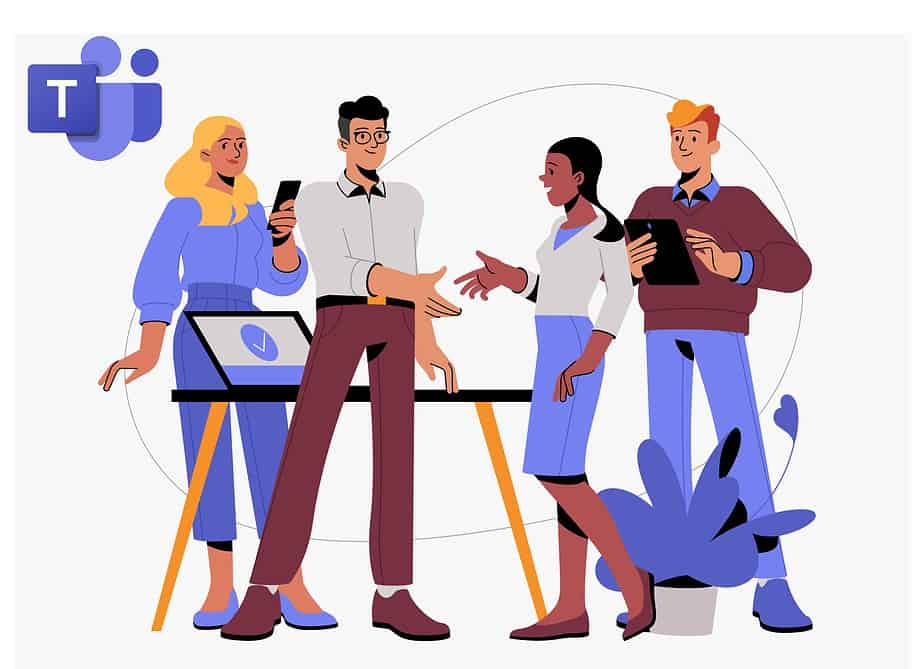While Microsoft Teams is a great way to stay connected with your team, it’s also a powerful tool for communicating with clients and managing projects. In this article, we’ll explore how to use Teams for client communication and management and provide you with some tips and strategies to make the most of this versatile tool.
Setting up Microsoft Teams for client communication and management
The first is to set up a team and channels. Teams are the main organizing units in Teams, while channels are subgroups within a team that focus on specific topics or projects. Here are some options for how you can organize your client communication:
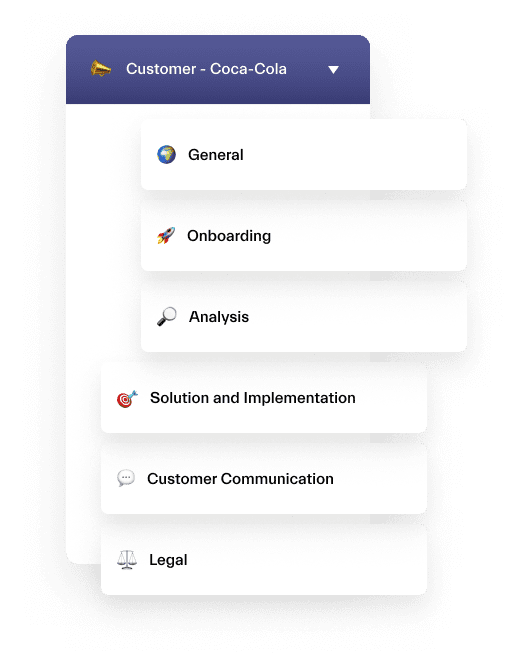
Create a team for each client
If you have multiple clients, you may want to create a separate team for each. This can help you keep your conversations and files organized and avoid confusion between different clients. Within each team, you can create channels for different projects or topics related to that client.
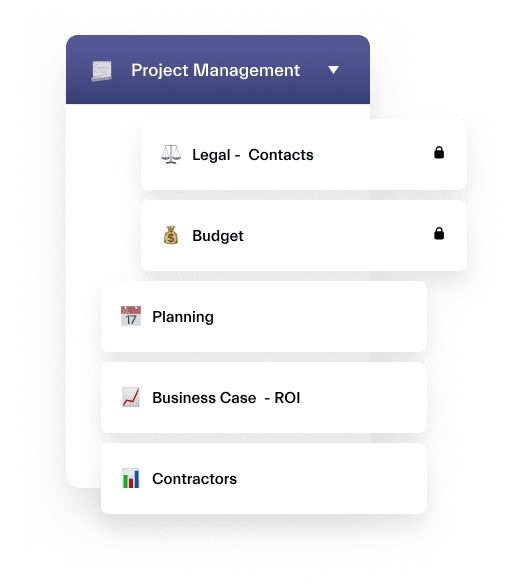
Create a team for each project
If you work on multiple large-scale projects for the same client, you may want to create a separate team for each project. Within each team, you can create channels for different aspects of the project, such as design, development, and testing.
Invite clients to a shared channel
If you only need to communicate with a client on a specific project or topic, you can invite them to a shared channel within your existing team
You should decide whether you want the client to have access to all the information you share within a team, or just some of it. In the first case, you can invite your clients to the entire team as a member. Additionally, you can create a private channel for them to discuss confidential matters that shouldn’t be shared with the entire team working with the client.
If you want your customer to have access only to specific channels, go for shared channels. You can learn more about shared channels in this blog post.
Communicating with clients in Microsoft Teams
Microsoft Teams offers a variety of features that can help you stay connected and establish effective communication with clients, partners and other external parties.
Chat
Chat is a great option when you need to have a quick conversation with a client or team member. You can send messages to individuals or groups, and you can also send files, emojis, and gifs. This feature is great for when you need to discuss something that doesn’t require a full meeting, such as confirming a meeting time or asking a quick question.
Channel posts
Channel posts are similar to chat, but they are visible to everyone in a particular channel. Channels are like separate chat rooms for specific topics or projects, and they allow you to keep all communication related to that topic in one place.
You can share files, links, and other information in channel posts, and anyone in the channel can reply or react. Use @mentions to direct a message to a specific person or group. This way, the person or group will receive a notification, which can help ensure that important messages don’t get lost in the shuffle.
You can also pin important messages or documents to the top of a channel. This can be particularly helpful when you want to draw attention to something that needs to be addressed urgently, or when you want to keep an important document visible and easily accessible to your team.
Video conferencing
Video meetings are great for when you need to have a more in-depth conversation with a client or team member. Teams allows you to host meetings for thousands of participants, and you can join from anywhere, including on the go. You can share your screen, record the meeting, and even blur your background if you’re in a noisy or distracting environment.

Managing customer projects with Microsoft Teams
Managing client projects can be a challenge, but with the right tools and systems in place, it can be much easier to stay organized and on track. Microsoft Teams offers a range of features that can help you manage your projects more effectively, including tools for creating task lists, tracking deadlines, collaborating on documents, and streamlining the approval process. Let’s take a closer look at how these features work and when they are most useful.
Planner
Planner is a great task management tool that can help you manage projects within Teams. You can create different buckets for different stages of the project, such as “to-do,” “in progress,” and “completed.” You can also set due dates, add comments, and attach files to each task. Due to its integration with Teams you can assign tasks directly to team members. They will receive notifications when they have a new task to complete.
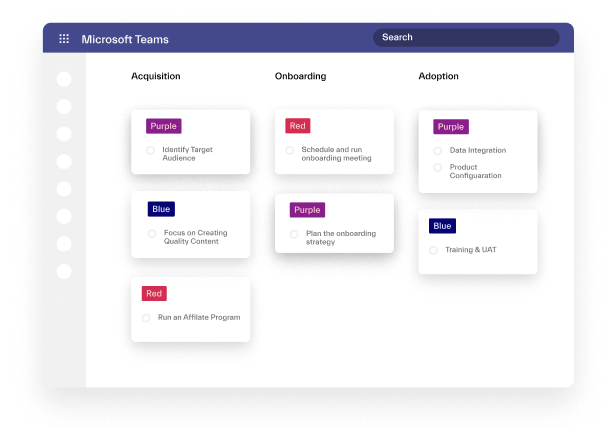
Lists
Lists is another tool that can be used to create and manage tasks. It allows you to create custom lists that can be shared with your team, and you can track progress by adding status updates to each item on the list.
Trello
Trello is a popular project management app that can be integrated with Teams. It’s great for visualizing project progress and assigning tasks to team members. You can create boards for each project and add cards for each task, which can be moved from one board to another as they are completed. You can also assign due dates, add comments, and attach files to each card.
Channel Calendar
Teams allows you to create channel meetings through Channel Calendar so that the whole team has an overview of all upcoming events.
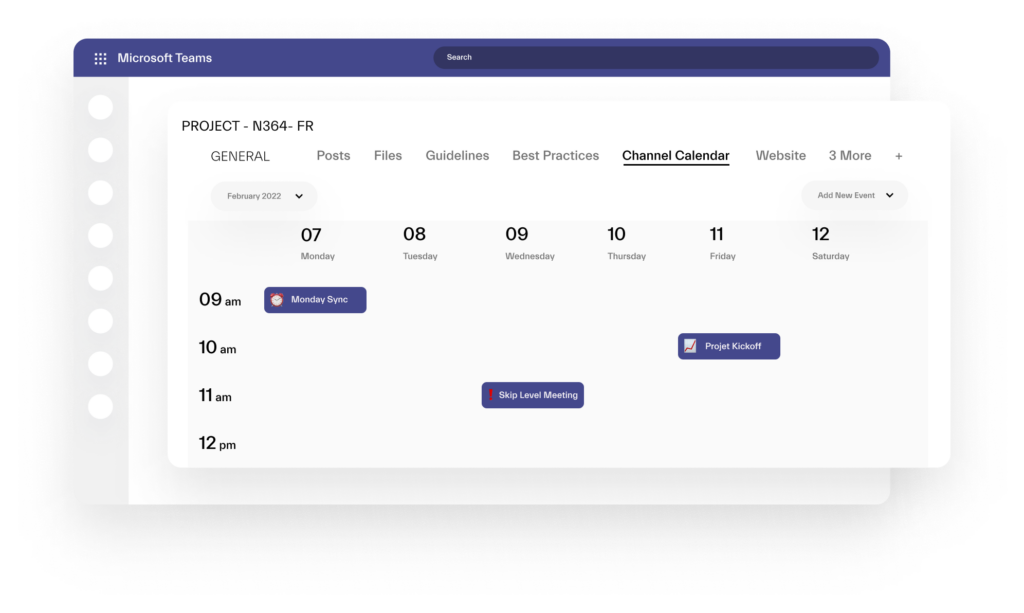
Approvals
The Approvals app is another helpful tool for streamlining the approval process with your customers. It allows you to create approval workflows for documents, forms, and other items. You can set up a sequence of approvers and notify them when there’s something to approve. Once all approvers have signed off, the item is marked as approved and can move on to the next stage of the project.
CRMs
Integrating other tools with Teams can also be helpful for client communication and management. For example, you might integrate a CRM tool like Salesforce or HubSpot to manage client information and interactions.
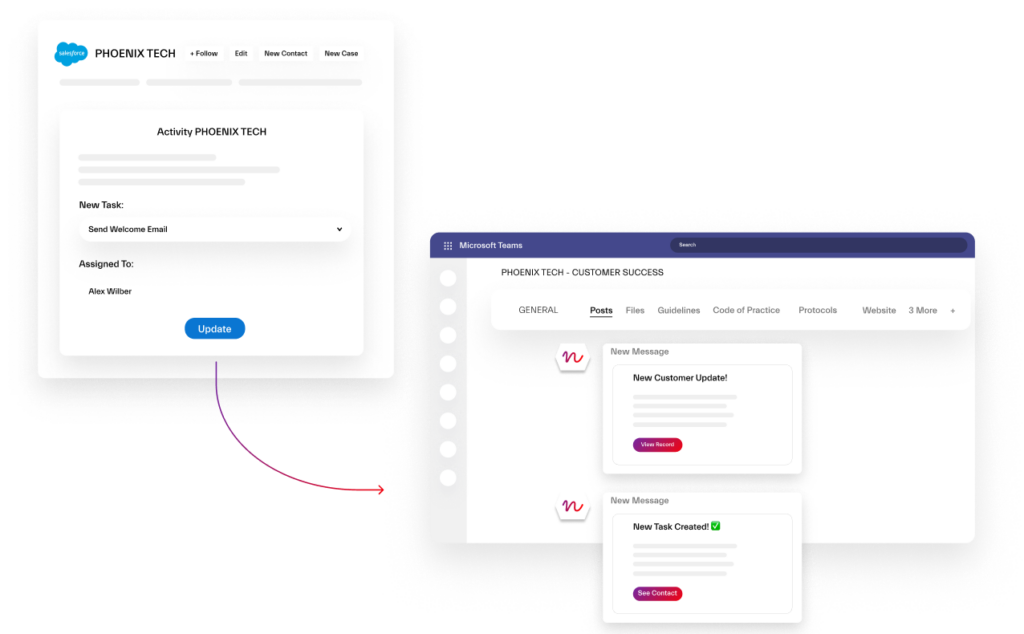
Teams also offers a range of third-party integrations that can be used to customize and extend its functionality. For example, you might integrate Microsoft Power BI to create custom dashboards and visualizations.
→Download: Microsoft Teams & Salesforce Integration Guide
File sharing
Collaboration on documents and project updates with clients is also made easy with Teams. You can share files and documents with your team, and edit them in real-time. Teams also allows you to add comments and suggest changes, making it easy to collaborate and communicate with your team.
If you work with a lot of files and documents, you might find it helpful to use the Files tab. It allows you to organize your files and documents in folders, making it easier to find what you need. You can also share files with your team and set permissions to control who has access to them.
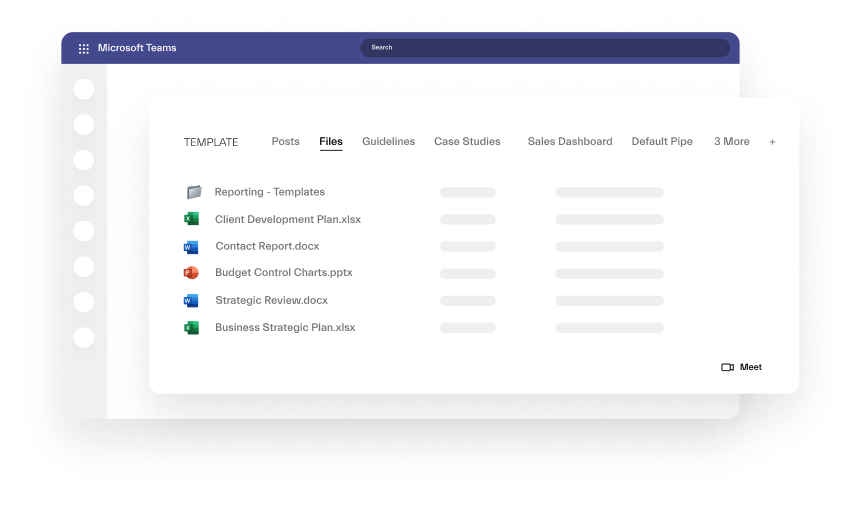
Structure client communication in Microsoft Teams with nBold
If you’re looking to structure and streamline your collaboration process, Microsoft Teams Templates by nBold can help.
Now, let’s say you need to create teams and build everything we mentioned for each project or customer. Doing everything manually can be very time consuming and may slow down your performance, especially if your business is growing. Instead of spending your time on manually creating collaboration workspaces from scratch, you could be focusing on your clients.
By using nBold’s Collaboration Templates, you can create pre-built Microsoft Teams structures for different collaboration scenarios. These templates can be stored in your own Template Catalog, which you can use whenever you need to create a new team.
Here are a few examples of templates that you can have for customer communication:

Each team you create will follow the same structure and have the exact same content as the template on which it was built. This includes channels with all their files, pre-configured tabs, tasks, guidelines, document libraries, and other data. By using these templates, you can save time and ensure consistency across all your collaboration workspaces.
We hope that this article has been informative and helpful, and that it has inspired you to explore the full potential of Microsoft Teams for client communication. Whether you’re a small business owner, a project manager, or a customer support specialist, Teams has something to offer for everyone. So, go ahead and give it a try, and see how it can transform your business operations and improve your customer experience.
